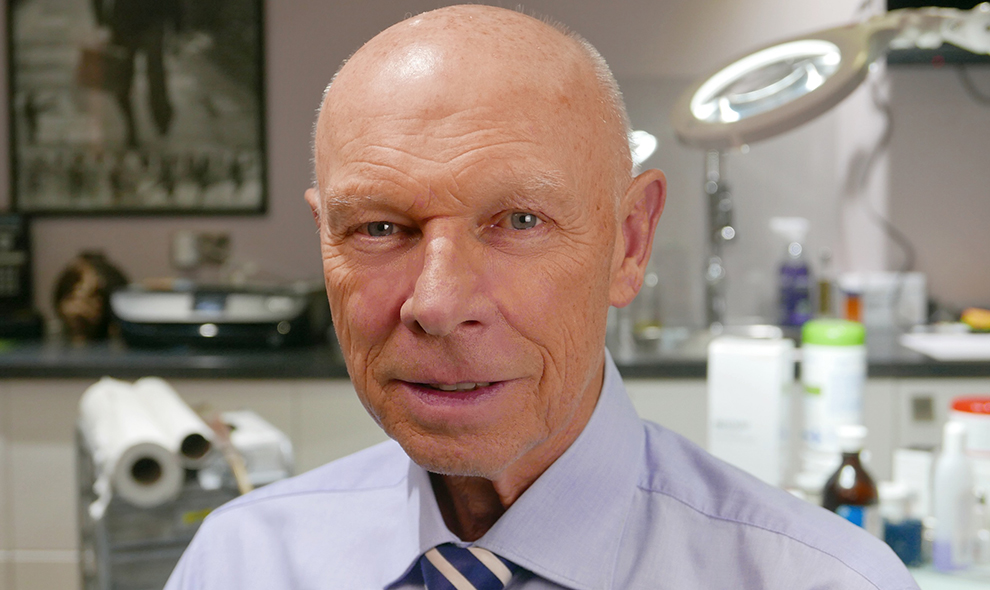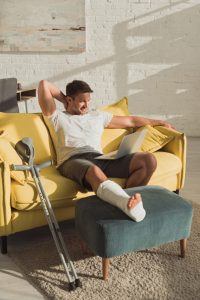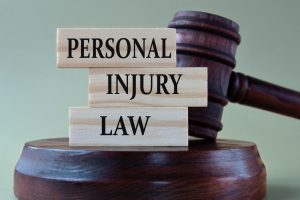What are common cases you instruct on?
As a podiatrist, I work mostly on personal injury or negligence to the feet, ankles and lower legs, focusing on the long term effect those injuries have upon mobility, gait and posture. These cases can arise from an injury sustained in the workplace, a road traffic or cycling accident, negligence in surgery, and many other causes.
Where a patient has an injury that impacts their ability to walk, to be mobile or has continued pain, we can get involved.
The cases we see often require the use of bespoke made specialised insoles called “orthoses” which often help to optimise foot leg and back function. We also refer patients to bespoke shoemakers if we believe this is necessary.
Expert witnesses have become an indispensable part of much of the increasing amount of litigation; how can your opinion change cases?
Cases involving injury or negligence to feet, ankles, lower legs all too often focus medically and surgically upon the injury site(s) alone. Our podiatric analysis and reporting focuses on the dynamics of how the injuries change the patient’s gait and posture, creating pain and injury elsewhere, and the long-term impact these injuries have on a patient’s daily life. Podiatrists concentrate upon how the judicious use of suitable in-shoe orthoses, and other non-surgical treatments, can beneficially alter long term outcomes. I believe the podiatric opinion we offer helps those involved to see the solutions that are available to help improve mobility and to mitigate some of the issues that the injury has created so improving the long-term quality of life of the patient. Where surgery has previously been proposed we can often offer an alternative for the Court to consider.
Our opinion provides an honest view, based on many years of experience, as to how best the skills of the podiatrist can be engaged to optimise mobility for the patient at a fair cost through non-surgical means.
What evidence and analysis do you need in order to conduct a thorough investigation?
Ahead of any investigation, we need to review the treatment management to date, history of injuries sustained, and any relevant orthopaedic or podiatric reports that have already been compiled. This may include an analysis of the injury and impacts of other medical professionals or personal statements from the patient.
How do you come to your diagnosis and recommendations?
We consider all the data provided, then at a consultation we examine the patient both statically and dynamically. This examination will be with and without any existing orthoses, footwear adjustments or walking aids the patient has used or had manufactured. Where appropriate, we will use our onsite X-ray facilities as part of the diagnosis and we routinely use an in-shoe computerised pressure analysis system that offers quantifiable evidence of the patient’s gait pattern. Taking all the data into account we use our podiatric knowledge and experience to provide a diagnosis and recommendations on treatment including costings.
How complicated can this become when analysing injuries? Is time of the essence here?
Podiatrists see both acute and chronic injury so we can see patients at any point in their journey, however, we tend to be involved once the acute injury management has been completed, and the injuries and the effects of the injuries incurred have become ‘chronic’. Time is important, so we use computerised pressure analysis to objectively detect progress levels and offer prognoses. We offer rapid analysis and concise report writing skills, with recommendations built into the report.
How do you overcome complications in order to ensure the analysis is as accurate as possible?
We have on-site, the latest clinical analysis technology available with which we are extremely familiar. We are an experienced team with in-house facilities including an X-ray system, video gait analysis software and computer pressure analysis. If required, we have access to more advanced MRI or CT scanning services locally. This, along with our many years of experience means our analysis is as up to date, and accurate as could be possible.
Gait and Posture Centre
Flat 6, Harmont House
20 Harley Street
London
W1G 9PH
0207 636 4465
clinic@gaitandposture.com
www.gaitandposture.com
Simon Costain is the owner and senior partner in the Gait and Posture Centre LLP and has more than 45 years of practice experience in Podiatry. He held a Consultant Podiatry post in the NHS and has worked in Harley Street since 1985.
Simon is one of the founders of Podiatric Surgery and Podiatric Sports medicine in the UK, but for many years has specialised in non-surgical gait evaluation techniques and, where possible, offers alternatives to surgery for foot problems. He divides his time between his private practice and some expert witness work.





















